Abstract
The stress-strain relations in mammalian tendon are analyzed in terms of the structure and mechanics of its constituents. The model considers the tensile and bending strength of the collagen fibers, the tensile strength of the elastin fibers, and the interaction between the matrix and the collagen fibers. The stress-strain relations are solved through variational considerations by assuming that the fibermaxtrix interactions can be modeled as beam on elastic foundation. The tissue thus modeled is a hyperelastic material. It is further shown that on the basis of the model, the dominant parameters to the tendon's behavior can be evaluated from simple tensile tests.
Full text
PDF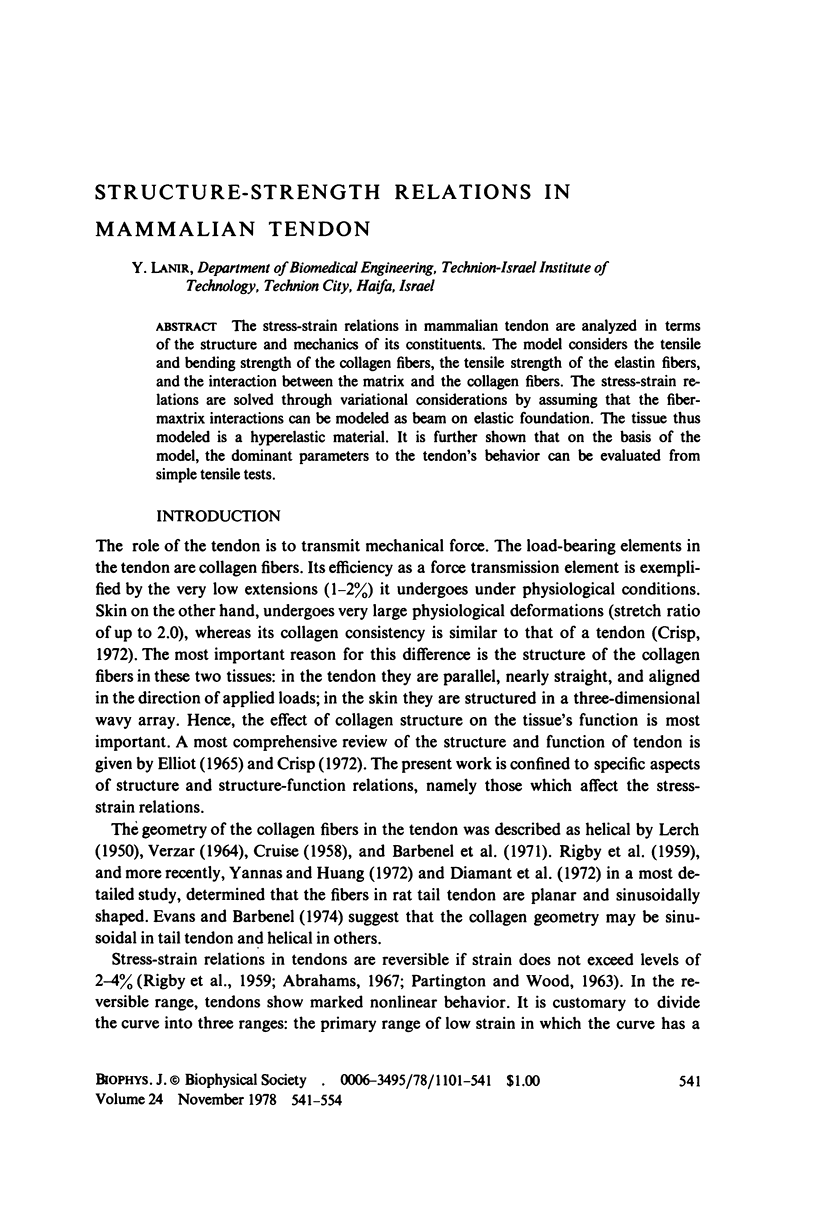

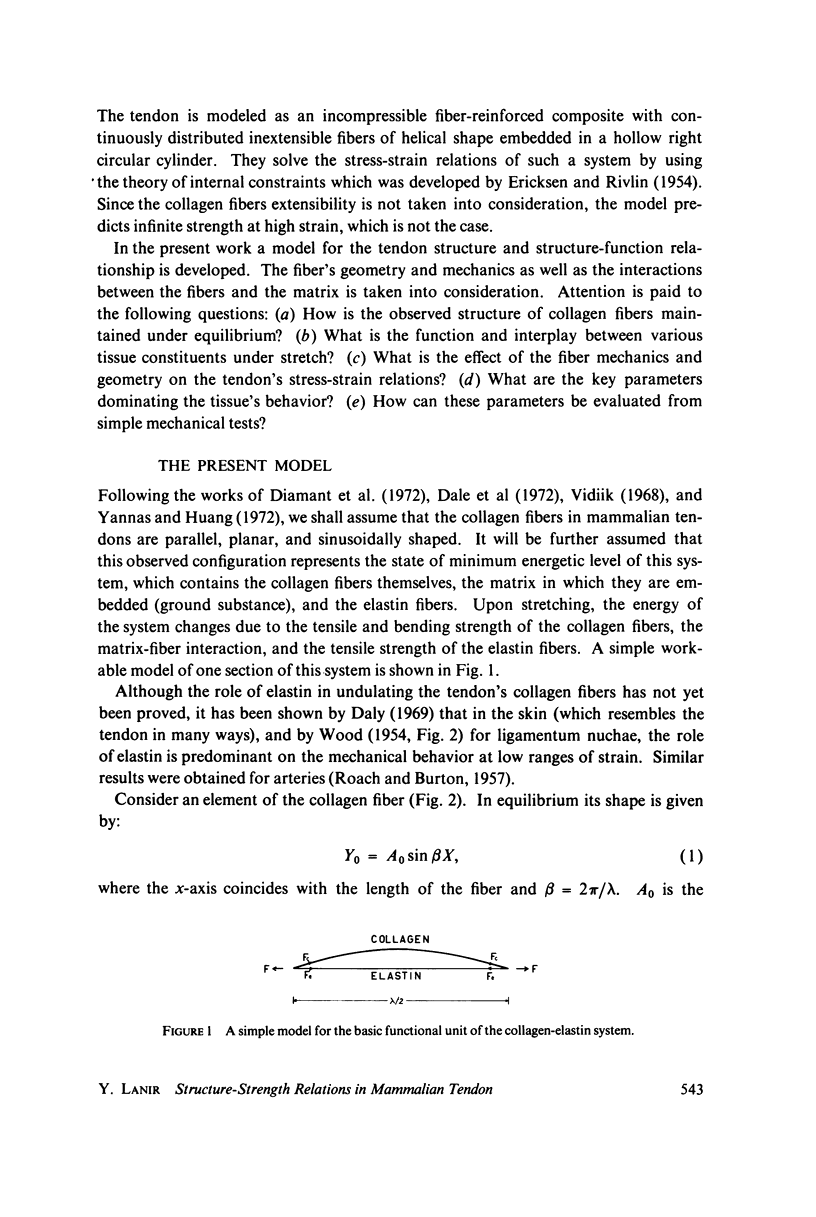
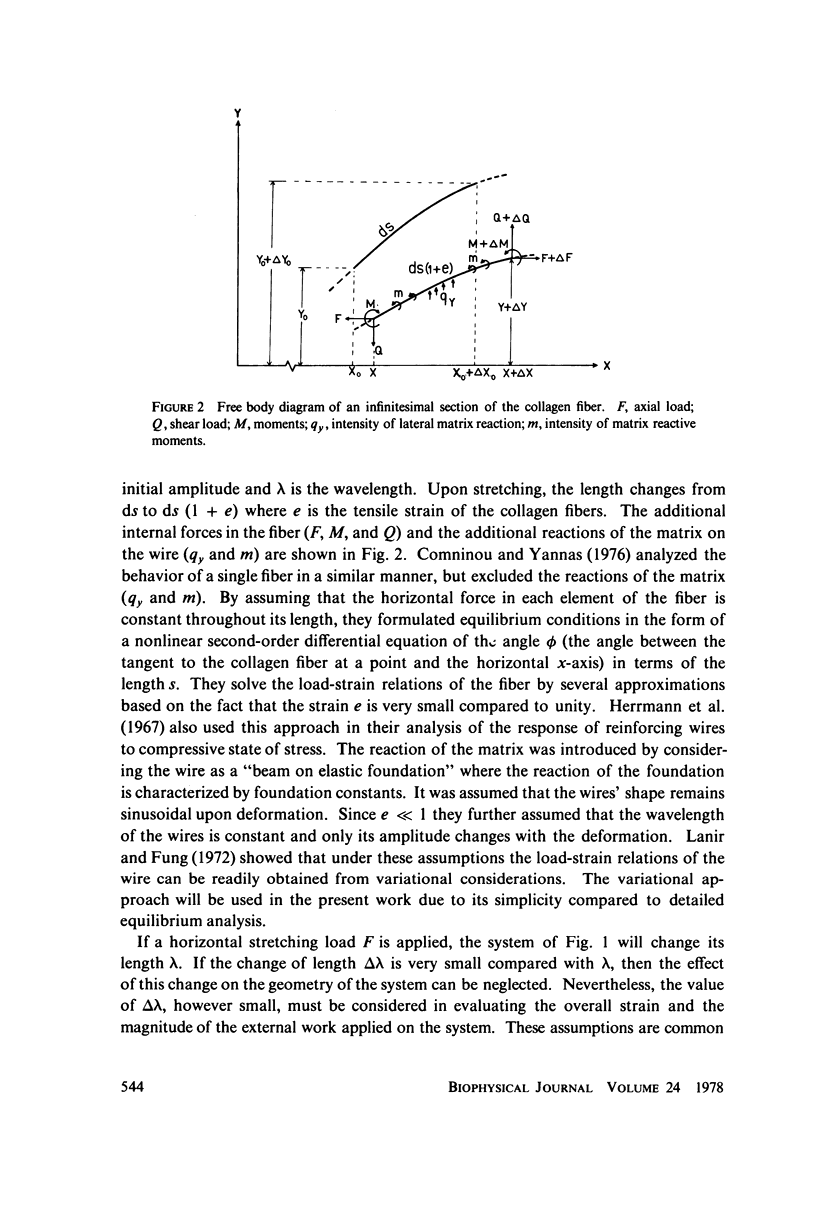
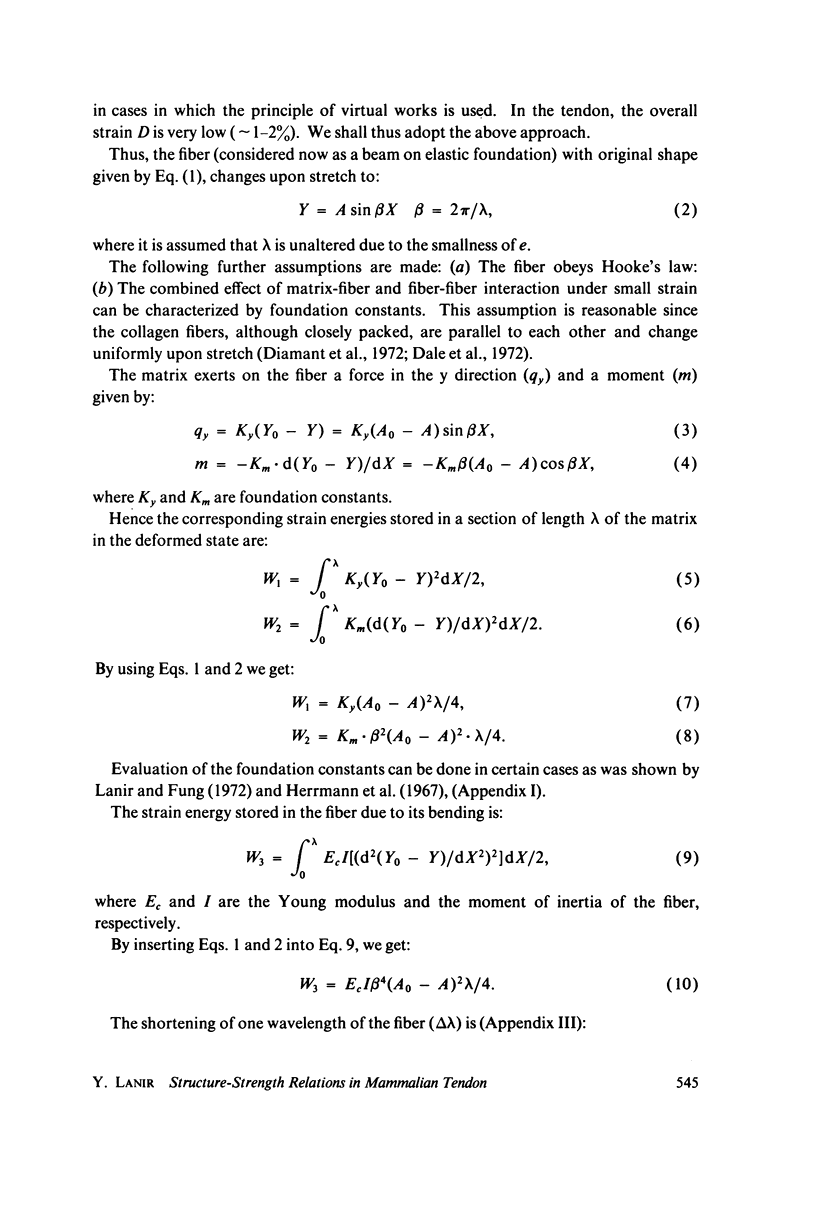
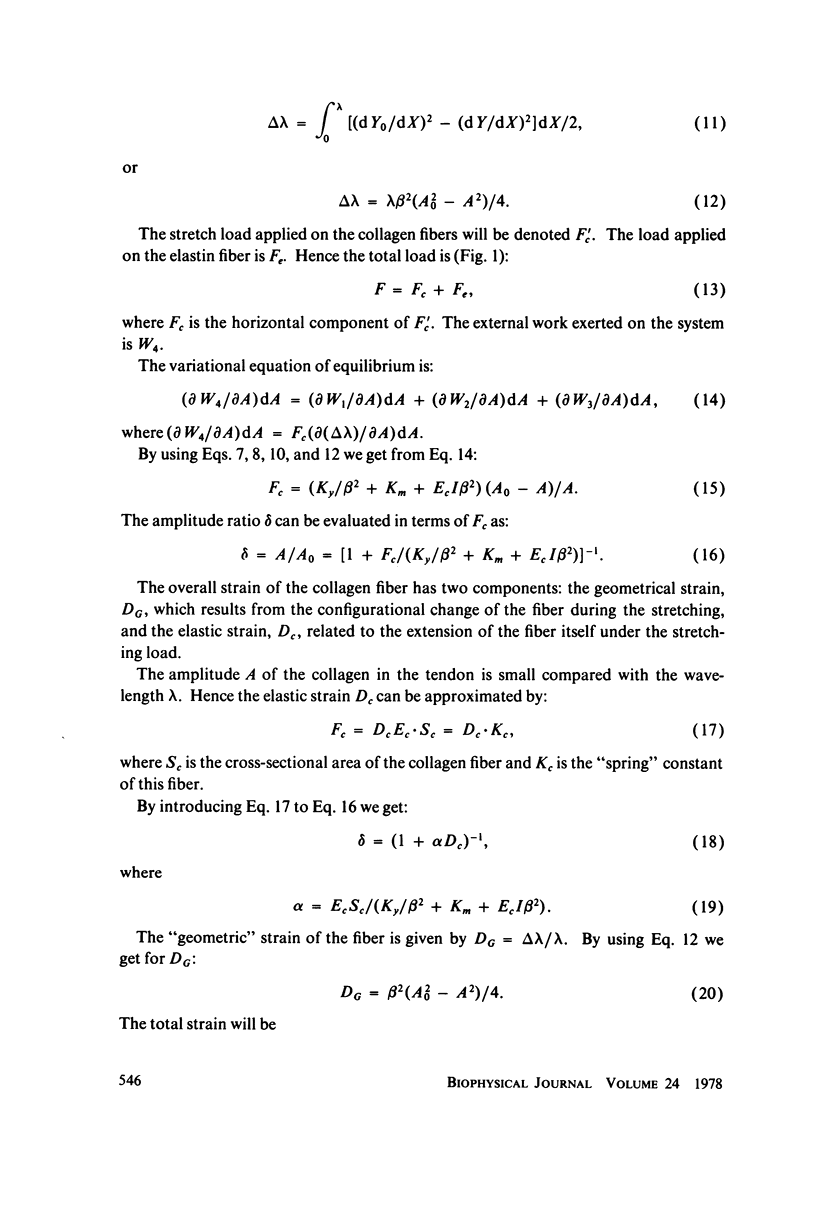
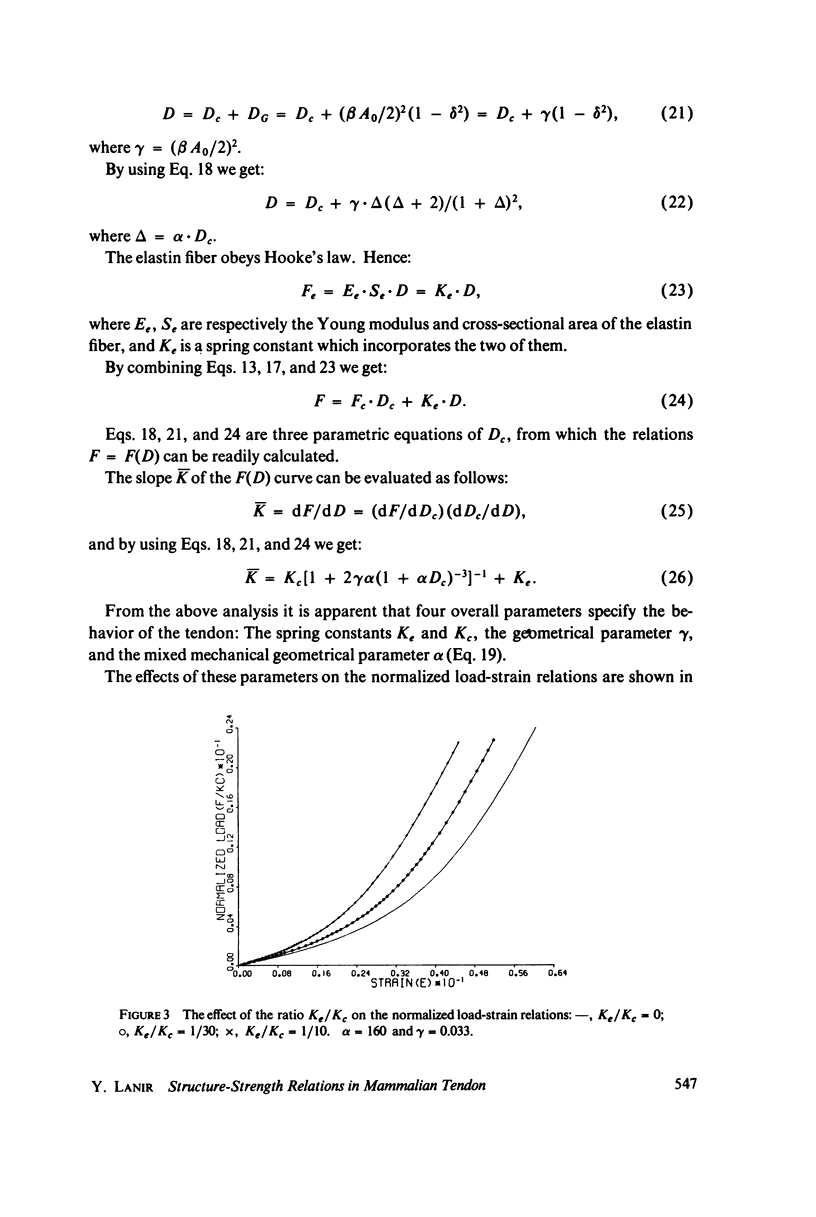
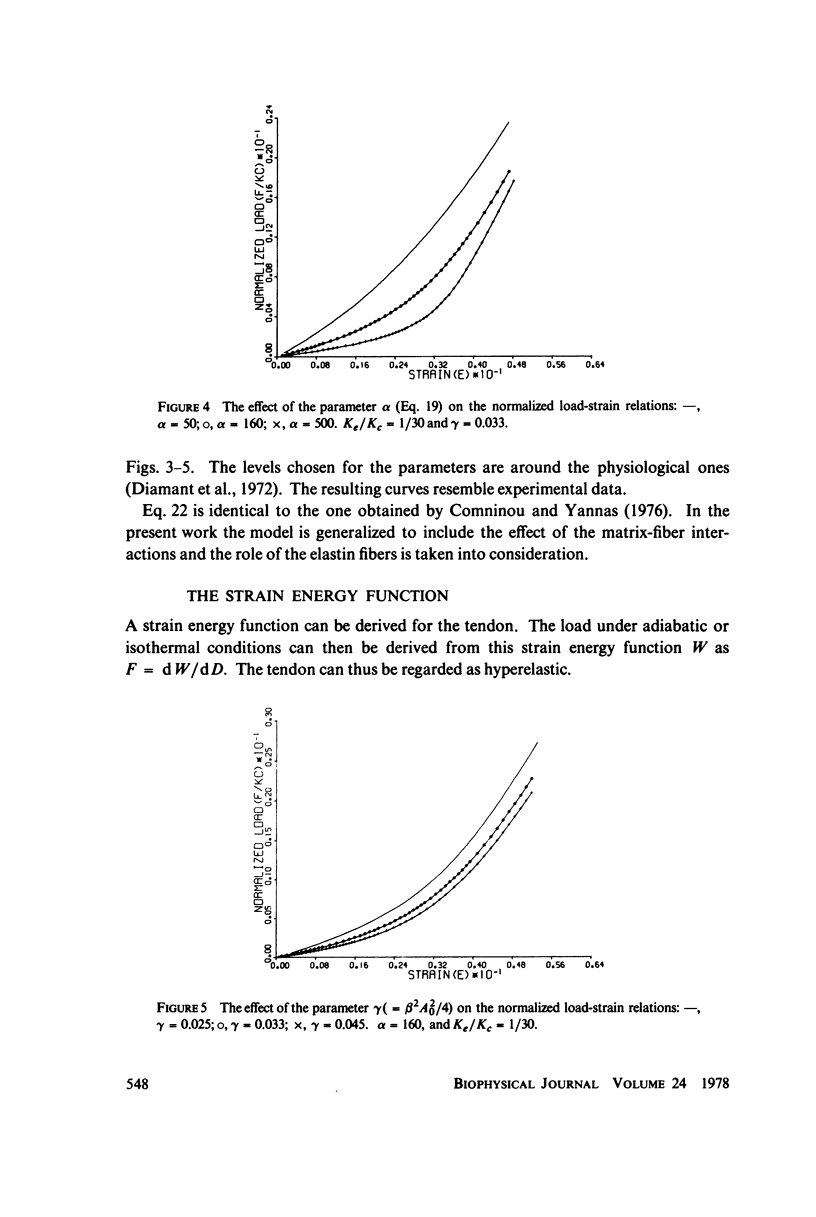
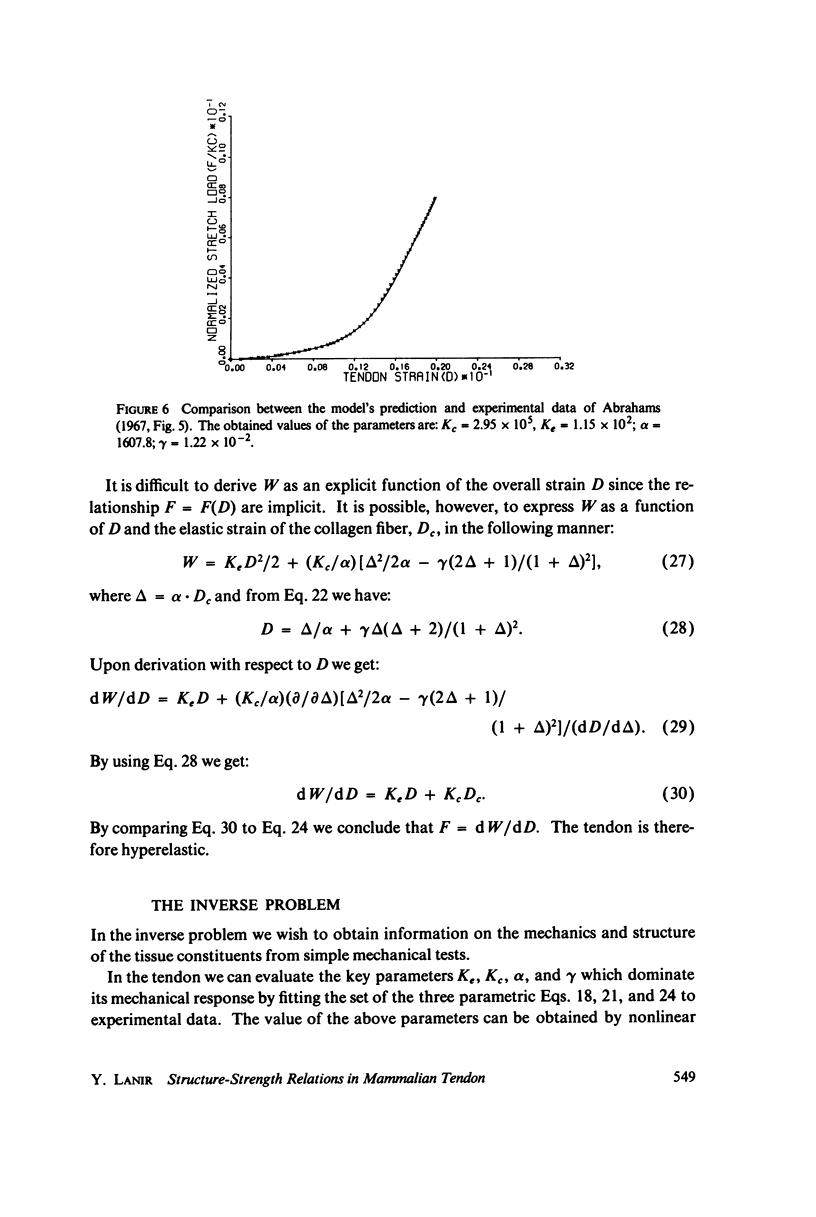
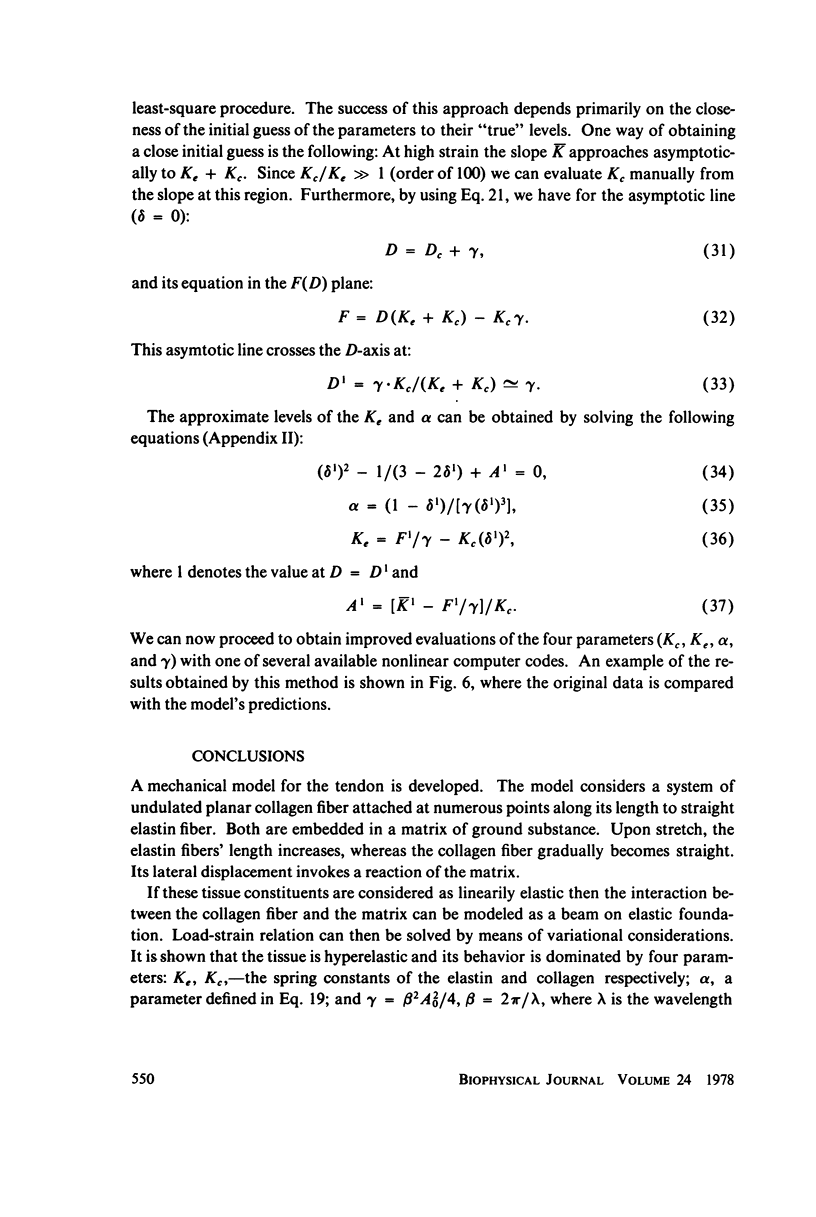
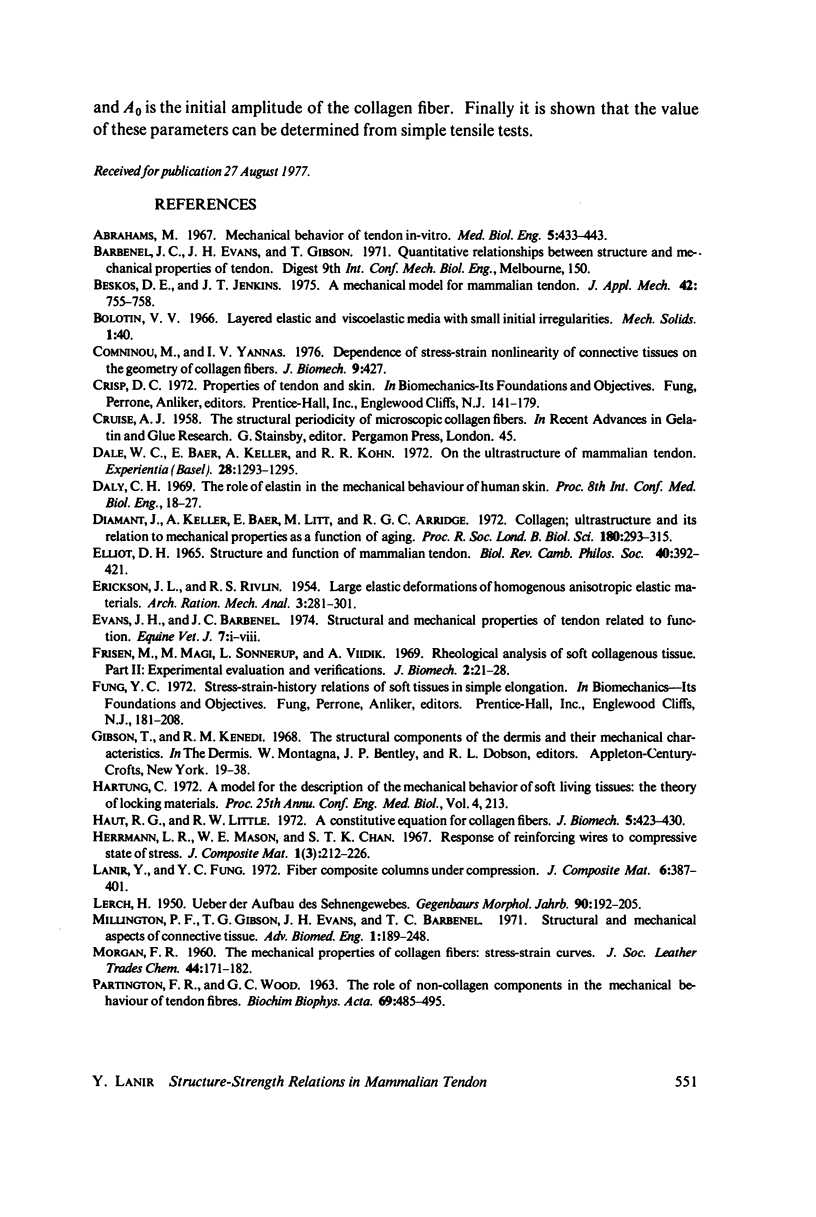
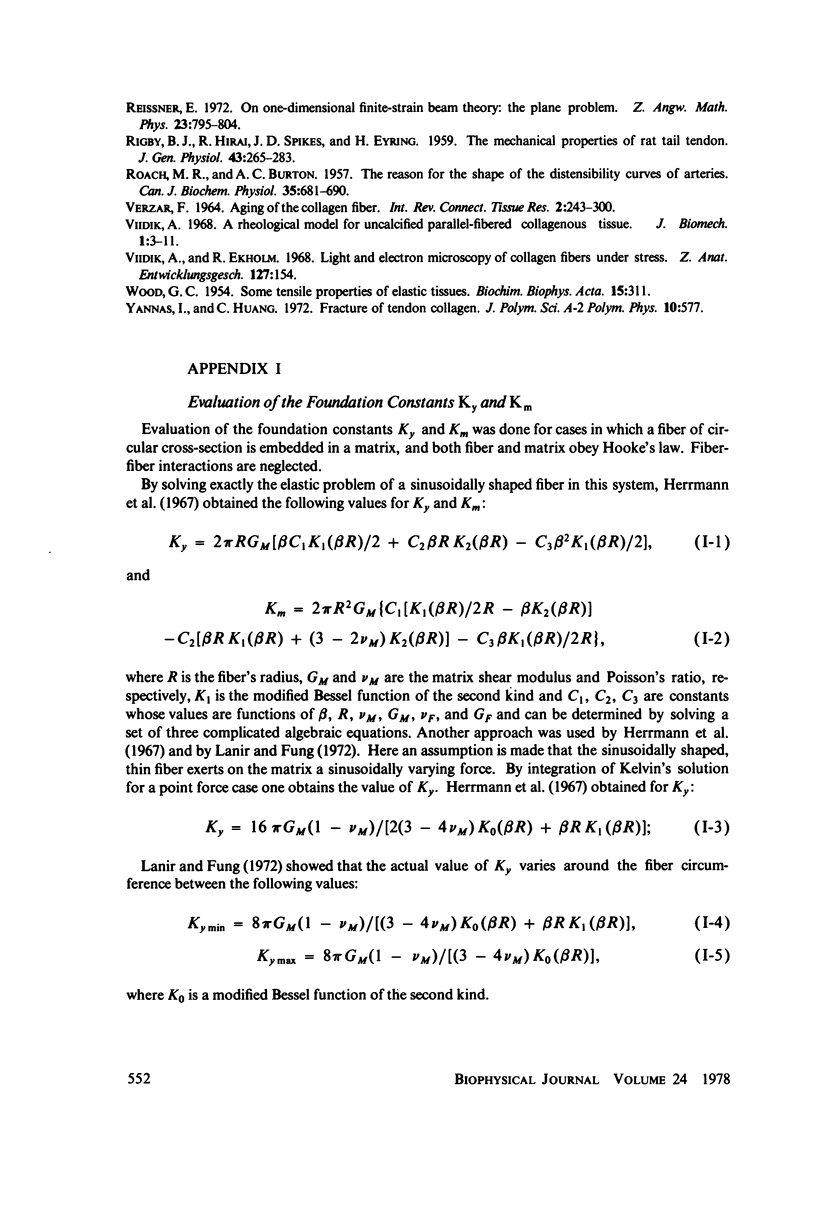
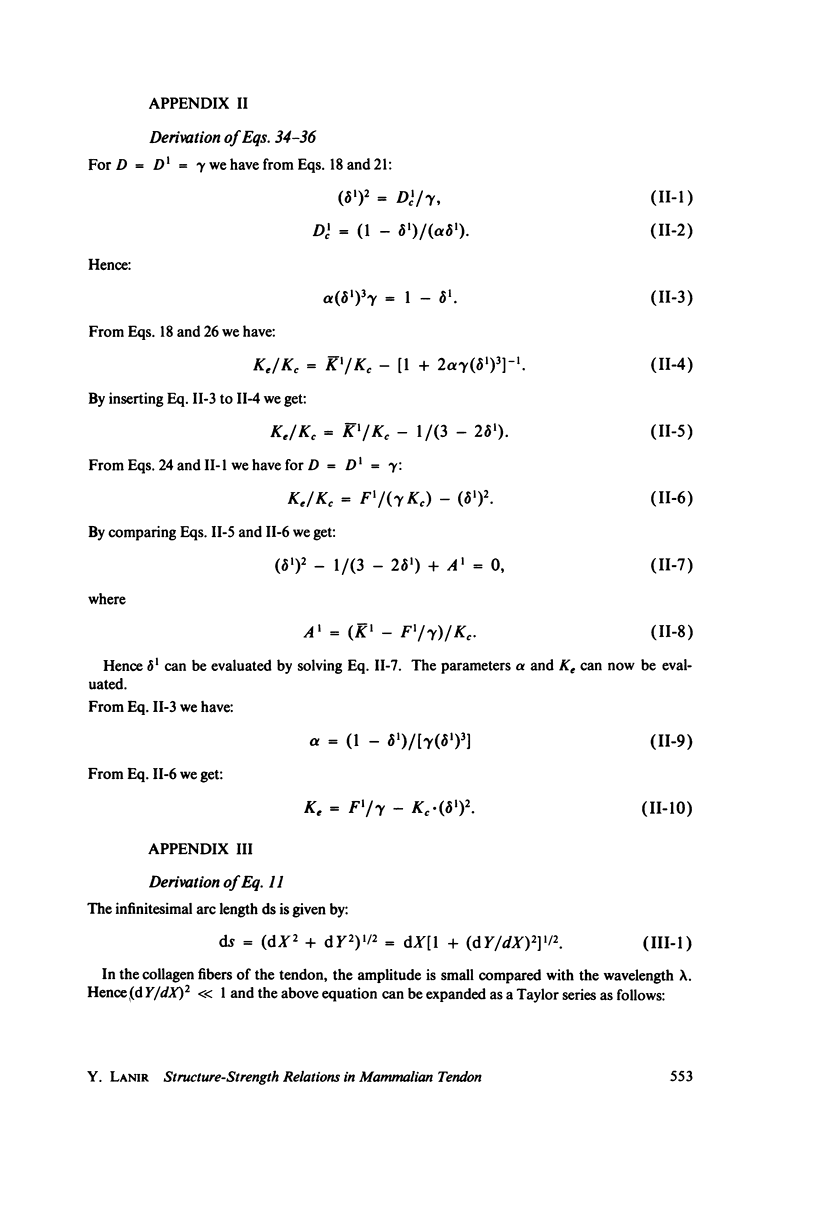
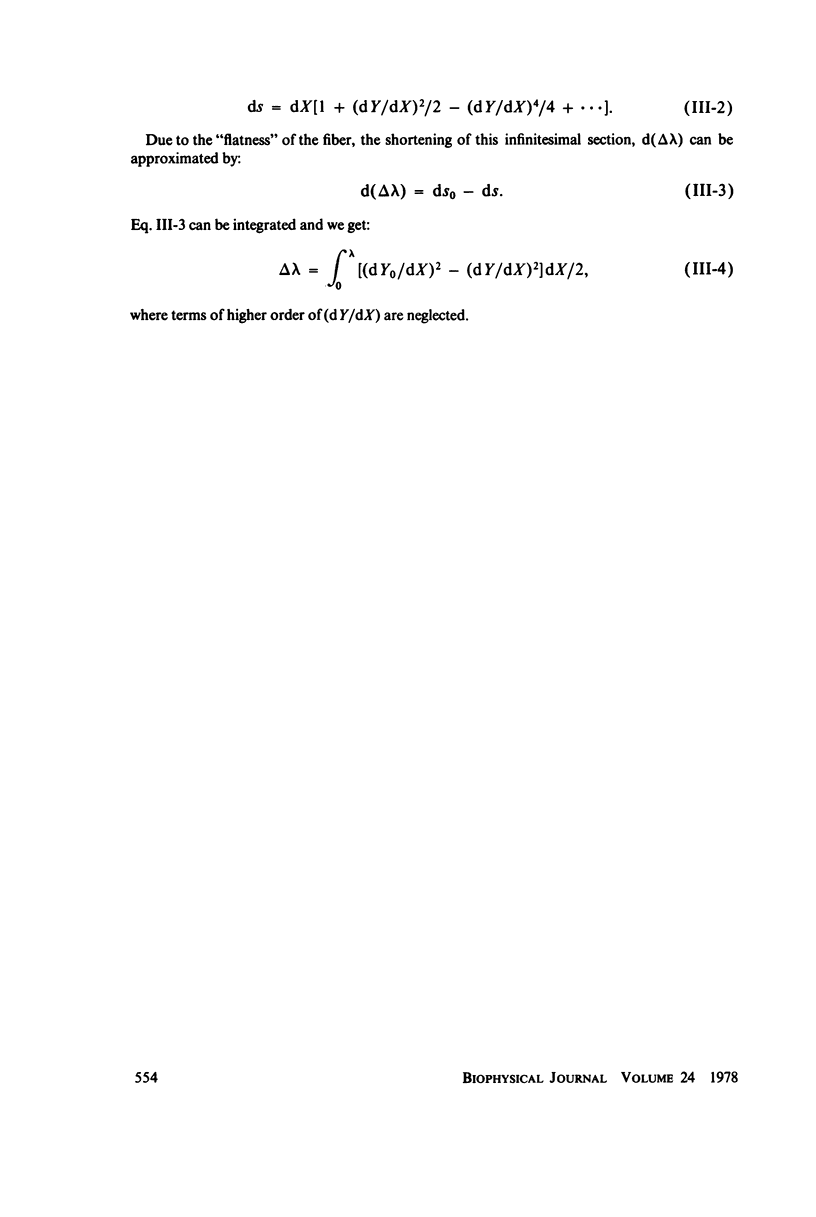
Selected References
These references are in PubMed. This may not be the complete list of references from this article.
- Abrahams M. Mechanical behaviour of tendon in vitro. A preliminary report. Med Biol Eng. 1967 Sep;5(5):433–443. doi: 10.1007/BF02479137. [DOI] [PubMed] [Google Scholar]
- Comninou M., Yannas I. V. Dependence of stress-strain nonlinearity of connective tissues on the geometry of collagen fibers. J Biomech. 1976;9(7):427–433. doi: 10.1016/0021-9290(76)90084-1. [DOI] [PubMed] [Google Scholar]
- Dale W. C., Baer E., Keller A., Kohn R. R. On the ultrastructure of mammalian tendon. Experientia. 1972 Nov 15;28(11):1293–1295. doi: 10.1007/BF01965303. [DOI] [PubMed] [Google Scholar]
- Diamant J., Keller A., Baer E., Litt M., Arridge R. G. Collagen; ultrastructure and its relation to mechanical properties as a function of ageing. Proc R Soc Lond B Biol Sci. 1972 Mar 14;180(1060):293–315. doi: 10.1098/rspb.1972.0019. [DOI] [PubMed] [Google Scholar]
- ELLIOTT D. H. STRUCTURE AND FUNCTION OF MAMMALIAN TENDON. Biol Rev Camb Philos Soc. 1965 Aug;40:392–421. doi: 10.1111/j.1469-185x.1965.tb00808.x. [DOI] [PubMed] [Google Scholar]
- Frisén M., Magi M., Sonnerup L., Viidik A. Rheological analysis of soft collagenous tissue. Part II: experimental evaluations and verifications. J Biomech. 1969 Mar;2(1):21–28. doi: 10.1016/0021-9290(69)90038-4. [DOI] [PubMed] [Google Scholar]
- Haut R. C., Little R. W. A constitutive equation for collagen fibers. J Biomech. 1972 Sep;5(5):423–430. doi: 10.1016/0021-9290(72)90001-2. [DOI] [PubMed] [Google Scholar]
- PARTINGTON F. R., WOOD G. C. The role of non-collagen components in the mechanical behaviour of tendon fibres. Biochim Biophys Acta. 1963 Mar 5;69:485–495. doi: 10.1016/0006-3002(63)91298-8. [DOI] [PubMed] [Google Scholar]
- ROACH M. R., BURTON A. C. The reason for the shape of the distensibility curves of arteries. Can J Biochem Physiol. 1957 Aug;35(8):681–690. [PubMed] [Google Scholar]
- Verzár F. Aging of the collagen fiber. Int Rev Connect Tissue Res. 1964;2:243–300. doi: 10.1016/b978-1-4831-6751-0.50012-4. [DOI] [PubMed] [Google Scholar]
- Vidik A., Ekholm R. Light and electron microscopic studies of callagen fibers under strain. Z Anat Entwicklungsgesch. 1968;127(2):154–164. doi: 10.1007/BF00521981. [DOI] [PubMed] [Google Scholar]
- Viidik A. A rheological model for uncalcified parallel-fibred collagenous tissue. J Biomech. 1968 Jan;1(1):3–11. doi: 10.1016/0021-9290(68)90032-8. [DOI] [PubMed] [Google Scholar]
- WOOD G. C. Some tensile properties of elastic tissue. Biochim Biophys Acta. 1954 Nov;15(3):311–324. doi: 10.1016/0006-3002(54)90032-3. [DOI] [PubMed] [Google Scholar]


